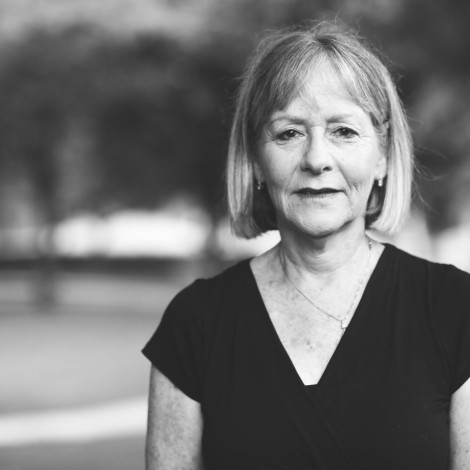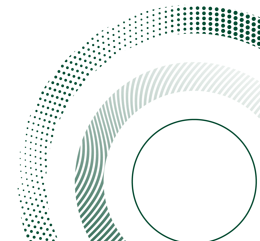
Prof. Noa Aharony
CV
Education
Academic Positions held in the University
Professor, Department of Information Science, 2016
Head, Department of Information Science, 2014 -
Associate Professor, Department of Information Science, 2014-2016
Senior Lecturer, Department of Information Science, 2011-2014
Areas of Research Interest
-
Information Literacy
-
Distance Education
-
Web 2.0
-
Librarians' and Information Scientists' Education
Research
- Perceived value and the use of new technologies by various groups:
Library and Information Science (LIS) students, librarians and information professionals,
politicians and the general public - Information Literacy
Social Media
E-learning
Education of the LIS community
Courses
Course no. 35-707: Social Science Resources
Course no. 35-951: Information literacy
Course no. 35-949: Social Media Seminar
Course no. 35-982: Advanced Internet Course
Course no. 35-996: Doctoral Colloquium
Publications
1. Aharony, N. (2004). Reference rules according to the APA style. Meidaat, 1, 81-
86. (In Hebrew).
2. Aharony, N. (2006). Different perceptions among Library and Information Science
students who study in three different institutions. Meidaat, 2, 27- 42. (In
Hebrew).
3. Aharony, N. (2006). The use of learning strategies among students learning
English in an Internet environment. Dapim, 38, 153-182. (In Hebrew) (A).
4. Aharony, N. (2007). School library and its librarians. Perceptions and attitudes of
the pupils, teachers and librarians. Meidaat, 3, 32-44. (In Hebrew).
5. Aharony, N. (2006). The librarian and the information scientist: Different
perceptions among Israeli information science students. Library & Information
Science Research 28 (2), 235-249.
6. Aharony, N. (2006). The use of "Deep" and "Surface" learning strategies among
students learning English as a foreign language in an Internet environment.
British Journal of Educational Psychology 76 (2), 851-866.
7. Aharony, N., Raban, D. (2008). Economics of information goods: An
interdisciplinary subject for Israeli LIS and MBA curricula. Library &
Information Science Research 30 (2), 102-107.
8. Dotan, G., Aharony, N. (2008). Information literacy roles of library media
specialists in high schools: Israeli perspectives. Journal of Information
Literacy, 2 (1), ojs.lboro.ac.uk/ojs/index.php/JIL/article/viewArticle/27
9. Aharony, N. (2009). The use of Wiki in a knowledge management academic
course: A qualitative investigation. Journal of Web Librarianship, 3 (1), 35-53.
10. Aharony, N. (2009). Web 2.0 use by librarians. Library & Information Science
Research, 31 (1), 29-37.
11. Aharony, N. (2009). Librarians' attitudes towards marketing library services.
Journal of Librarianship and Information Science, 41 (1), 39- 50.
12. Bronstein, J. Aharony, N. (2009). Views and dreams: A Delphi investigation into
Library 2.0 applications. Journal of Web Librarianship, 3 (2), 89.
13. Aharony,N. (2009). The influence of LIS students' personality characteristics on
their perceptions towards Web 2.0 use. Journal of Librarianship and
Information Science (41) 4, 227-241.
14. Aharony, N. (2009). An exploratory analysis of librarians' blogs: Their
development, nature and changes. Aslib Proceedings, 61 (6), 587- 604.
15. Aharony, N. (2009). Librarians and information scientists Blogosphere: An
exploratory analysis. Library & Information Science Research 31, 174– 181.
16. Aharony, N. (2010). LIS blogs' comments: An exploratory analysis. Libri. 60(1),
65-77.
17. Aharony, N. (2010). Twitter use in libraries: An exploratory analysis. Journal of
Web Librarianship, 4(4).
18. Aharony, N. (2010). Information literacy in the professional literature: An
exploratory analysis. Aslib Proceedings. 62 (3), 261-282.
19. Aharony, N. (2011). Librarians' attitudes towards knowledge management.
College & Research Libraries, 72 (2), 111-128.
20. Aharony, N. (2011). Web 2.0 in the professional LIS literature: An exploratory
analysis. Journal of Librarianship and Information Science, 43, 3-13.
21. Aharony , N. (2011). Library and Information Science students' feedback in an
online course. Journal of Education for Library and Information Science, 52
(4), 305- 319.
22. Aharony. N. (2012) Library and Information Science research areas: A content
analysis of journal articles: 2007 – 2008. Journal of Librarianship and
Information Science , 44 (1), 27-35.
23. Aharony, N. (2012). Facebook use in libraries: An exploratory analysis. Aslib
Proceedings. 64 (4). 358-372.
24. Aharony, N. (2012). Twitter use by three political leaders: An exploratory
analysis. Online Information Review, 36 (4), 587 – 603.
25. Aharony, N. (2012). Academic libraries websites: 2000- 2010. The
Electronic Library, 30 (6), 764-776.
26. Aharony, N. , & Bronstein, J. (2012). A Delphi investigation into future trends
in E-Learning. Interactive Learning Environments. DOI:
10.1080/10494820.2012.738232.
27. Aharony, N. (2012). WikiLeaks comments: A study of responses to articles.
Online Information Review, 36 (6), 828-845.
28. Aharony, N. (2013). Facebook use by library and information science students.
Aslib Proceedings 65 (1), 19-39.
29. Aharony, N. (2013). LIS students' perceptions towards the assimilation of e-
books in the library: An exploratory analysis. Journal of Education for
Library and Information Science, 54 (1).
30. Aharony, N. (2013). Librarians' attitudes towards mobile services. Aslib
Proceedings, 65 (4), 358-375.
31. Aharony, N. , Bronstein, J. (2014). Academic librarians' perceptions on
information literacy: The Israeli perspective. portal: Libraries and the
Academy, 103-119.
32. Rafaeli, S. , Bar-Ilan, J. , Baruchson, S. , Aharony, N. , & Yaari, E. (2013). I just
wanted to ask? A comparison of user studies of the citizens advice bureau
(SHIL) in Israel. Journal of Librarianship and Information Science. doi:
10.1177/0961000613497745
33. Aharony, N. LIS students’ perceptions of M-Learning. (2014). Journal of
Librarianship and Information Science, 46 (1), 48-61.
34. Aharony, N. (2014). Mobile libraries: Librarians' and students' perspectives.
College & Research Libraries, 75 (2), 202-217.
35. Aharony, N. (2014). The effect of personal and situational factors on LIS
students' and professionals' intentions to use E-books . Library &
Information Science Research, 36 (106-113). 10.1016/j.lisr.2014.01.001
36. Aharony, N. (2014). Factors affecting the adoption of e-books by information
professionals. Journal of Librarianship and Information Science.
DOI: 10.1177/0961000614532120
37. Aharony, N. (2014). Factors affecting adoption of Facebook: The Israeli LIS
community perspective. College & Research Libraries, 75 (6), 878-894.
38. Aharony, N. (2014). Factors affecting the adoption of cloud computing by
information professionals. The Electronic Library.
39. Aharony, N. (2014). Cloud computing: Information professionals' and
educational technology experts' perspectives. Library High Technology.
40. Aharony, N. , & Kooper, Z. (2014). Content analysis of Talkbacks in articles
dealing with elderly's abuse, violence and neglect. Meiddat (In Hebrew).
41. Bronstein, J. , & Aharony, N. (2014). Personal and political elements of the
use of social networks sites. Information Research.
42. Aharony, N. (2014). What's App: A social capital perspective. Online Information
Review.
43. Aharony, N. (2015). Why do students use What's App? An exploratory study.
Aslib Journal of Information Management, 67 (2), 136 – 158.
44. Aharony, N., & Prebor, G. (2015). Librarians' and Information Professionals'
Perspectives towards Discovery Tools - An Exploratory Study. The Journal of
Academic Librarianship, 41 (4), 429-440.
45. Aharony, N. , & Shonfeld, M. (2015). ICT use: Educational technology and
library and information science students' perspectives – An exploratory study.
IJELL.
46. Amichai-Hamburger, Y. , Gazit, T. , Bar-Ilan, J. , Perez, O. , Aharony, N. ,
Bronstein, J. , & Dyne, S. (2015). Psychological factors behind the lack of
participation in online discussions. Computers in Human Behavior, 55 (A), 268-
277.
47. Aharony, N. , & Bar-Ilan, Judit (2015). Students’ reading preferences: An
exploratory study. Journal of Librarianship and Information Science.
48. Prebor, G. , & Aharony, N. (2015). Discovery tools in Israeli libraries: Usage and
satisfaction. Meidaat. (In Hebrew). http://www.meidaat.org.il/ .
49. Rothchield, N., Aharony, N. (2015). Empathetic communication among discourse
participants in virtual communities of people who suffer from mental illnesses.
Information Research
50. Aharony, N., & Gazit, T. (2015). The importance of the WhatsApp family group: An
exploratory analysis. Aslib Journal of Information Management, 58 (2), 174-192.
51. Aharony, N. (2016). Relationships among attachment theory, social capital perspective
personality characteristics, and Facebook self-disclosure. Aslib Journal of Information Management, 68 (3),362-386
52. Aharony, N., & Bar-Ilan, Judit (2016). Students’ perceptions on MOOCs: An
:exploratory study. IJELL (12). DOI
http://www.informingscience.org/Publications/3540
53. Aharony, N., & Shachaf , O. (2016). The effects of information overload on reference librarians. Library and Information Science Research.
54. Bronstein, J., Gazit, T., Perez, O., Bar-Ilan, J., Aharony, N., & Amichai-Hamburger, Y. (2016). An examination of the factors contributing to participation in online forums. Aslib Journal of Information Management.
55. Aharony, N. , & Goldman, R. (2017). Internet use and e-health literacy: An Israeli perspective on vaccination. Information Research.
56. Aharony, N. , & Gonen, S. (2017). Social Capital on Facebook. Libri.
57. Aharony, N. (2017). Factors affecting student mobile phone use: An exploratory study of LIS Israeli students. The Electronic Library, 35 (6), 1098-1121, doi.org/10.1108/EL-06-2016-0131
58. Aharony, N. , Zion, A. (2017). The Effects of WhatsApp's Use on Working Memory Performance among Youth. Journal of Educational Computing Research. https://doi.org/10.1177/0735633117749431.
59. Mizrachi, D. , Salaz, M., Kurbanoglu, Serap; et al. Group Author(s): ARFIS Research Group. (2018). Academic reading format preferences and behaviors among university students worldwide: A comparative survey analysis. PLOS ONE, (13), 5. Article Number: e0197444
60. Aharony, N. , & Gur, H. (2017). The relationships between personality, perceptual, cognitive and technological variables and students' level of information literacy. Journal of Librarianship and Information Science.
61. Aharony, N. , Bar-Ilan, J. , Julien, H. , Kahana, M. , Kooper, T. (2017). Acceptance of Altmetrics by LIS scholars– An exploratory study. Journal of Librarianship and Information Science.
62. Gazit, T., Bronstein, J., Amichai-Hamburger, Y., Aharony, N., Bar-Ilan, J., & Perez, O. (2018). Active participants and lurkers in online discussion groups: A qualitative analysis of focus groups. Information Research, In Press.
63. Perez, O. , Bar-Ilan, J., Gazit, T. , Aharony, N. , Amichai-Hamburger, Y., & Bronstein, J. (2018). The prospects of E-Democracy: An experimental study of collaborative E- Rulemaking. Journal of Information Technology & Politics. In Press.
64. Gazit, T., Aharony, N. (2018). Factors explaining participation in WhatsApp groups: An exploratory study. Aslib Journal of Information Management. In Press.
65. Aharony, N., Gazit, T. (2018). Students' information literacy self-efficacy: An exploratory study. Journal of Librarianship and Information Science. In Press.
66. Bronstein, J. , Aharony, N. , & Bar-Ilan, J. (2018). Politicians' use of Facebook during Elections: Use of emotionally-based discourse, personalization, social media engagement and vividness. Aslib Journal of Information Management. In Press
67. Aharony, N., Gazit, T. (2019). Factors affecting students' information literacy self-efficacy. Library Hi Tech, In press.
68. Ben-Amran, S. , Aharony, N. , & Bar-Ilan, J. (2019). Elementary school pupils’ information literacy – a case study. Dapim. In press.
69. Gazit, T. , Amichai-Hamburger, Y., & Aharony, N. (2019). Tell me who you are and I will tell you which SNS you use: SNSs Participation" Online Information Review. In Press.
70. Aharony, N. , Julien, H. , & Nadel-Kritz, N. (2019). Survey of Information Literacy Instructional Practices in Israeli Academic Libraries. Journal of Librarianship and Information Science. In Press.
71.Cooper, T., Aharony, N., Bar-Ilan, J. and Rabin Margalioth, S. (2019). Women in academia: Abibliometric perspective. In Proceedings of the Tenth International Conference on Conceptions of Library and Information Science, Ljubljana, Slovenia, June 16-19, 2019. Information Research, 24(4), paper colis1926. Retrieved from http://InformationR.net/ir/24-4/colis/colis1926.html (Archived by WebCite® at http://www.webcitation.org/...)
72. Ben-Amran, S. , Aharony, N. , & Bar-Ilan, J. (2020). Pupils’ perspective about Information Literacy - a case study. Meidaat. In Press
73.Yavetz, G., Aharony, N. (2020). Social media in government offices: Usage and strategies. Aslib Journal of Information Management. https://www.emerald.com/insight/content/doi/10.1108/AJIM-11-2019-0313/full/html
74.Aharony, N., Bouchnik, D., & Reich, N. (2020). Israeli Teachers’ and teenagers’ attitude towards Information Security: A quantitative study. Meidaat.
75.Ben-Amran, S., Aharony, N., & Bar-Ilan, J. (2020). Information Literacy education in primary schools: A case study. Journal of Librarianship and Information Science.
76.Aharony, N., Bouchnik, D., & Reich, N. (2020). Readiness for Information Security of teachers as a function of their personality traits and their assessment of threats. Aslib Journal of Information Management.
77. Cooper, Z. , Aharony, N. , & Bar-Ilan, J. (2021). Gender differences in the Israeli academia: A bibliometric analysis of different disciplines. Aslib Journal of Information Management.
78. Aharony, N. , & Ayalon, A. (2021). “Did it take you three years to learn how to return a book to the shelf?”: School, public, and academic librarians’ perceptions of professional self-image in relation to the social status of librarianship and information science. Meidaat.
79. Bouchnik, D., & Reich, , & Aharony, N. (2021). Willingness to information security as a function of personality characteristics and threat assessment among adolescents. Online Information Review.
80. Yavetz, G., Aharony, N. (2021). Social media for government information dissemination: Content, characteristics and civic engagement. Aslib Journal of Information Management.
81. Shonfeld, M., Aharony, N., Nadel-Kritz, N. (2021). Teachers’ perceived information-literacy self-efficacy. Journal of Librarianship and Information Science.
82. Rothschild, N., Aharony, N. (2021). Self-disclosure in public and private groups of people with mental illnesses in Facebook. Online Information Review.
83. Hadad, S., & Aharony, N. (2022). Scientific publication in open and closed access among Israeli researchers: A bibliometric research. Meiddat - Information Science Journal [Hebrew].
84. Avizohar, C., Gazit, T. and Aharony, N. (2022), "Facebook medical support groups: the communication privacy management perspective", Aslib Journal of Information Management. https://doi.org/10.1108/AJIM-10-2021-0298
85. Yavetz, G., Aharony, N. and Sofer, Y.Y. (2022), "Information needs and seeking behaviors of Israeli citizens during the COVID-19 outbreak", Aslib Journal of Information Management. https://doi.org/10.1108/AJIM-06-2021-0167
86. Yavetz, G., & Aharony, N. (2022). The Users’ Point of View: Towards a Model of Government Information Behavior on Social Media. Heliyon. https://doi.org/10.1016/j.heliyon.2022.e10146
87.Zhitomirsky, Y., & Aharony, N. (2022). The Effect of a Patient Education Multimodal Digital Platform on Knowledge Acquisition, Self-efficacy, and Patient Satisfaction. Computers, informatics, nursing : CIN, 10.1097/CIN.0000000000000939. Advance online publication. https://doi.org/10.1097/CIN.0000000000000939
88. Rothschild, N. , Aharony, N. (2022). Motivations for Sharing Personal Information and Self-Disclosure in Public and Private Facebook Groups of Mentally Ill People. Aslib Journal of Information Management (Forthcoming).
Publications – Non Referred
89. Web 2.0 in schools of library and information science in the
USA: Are we missing the boat? Ariadne, 54, January, 2008. Cited 23 (GS)
90. Aharony N. (2009). Librarians and information scientists Blogosphere: An
overview. An invited chapter for Internet Issues: Blogging, the Digital Divide
and Digital Libraries, Nova Publishers.
91. A guest Forum article for June 2013 Informed Librarian Online issue: Librarians
and LIS students' attitudes towards mobile services.
Articles in Conference Proceedings
1. Dotan, G. , & Aharony, N. (2006). Information power standards in high
schools libraries, as a basis for collaboration with school teachers: A
snapshot. A national conference: Study design in the age of standards, 83-
85. (In Hebrew).
2. Aharony, N. and D. R. Raban (2006). Perspectives of lecturers, students,
and practitioners on information economics. IADIS International
Conference: e- Society 2006, Dublin, Ireland, 19-24.
3. Aharony, N., Raban, D. (2007). Economics of information goods: An
interdisciplinary subject for the Library and Information Science and
MBA curricula. Chais Conference on Instructional Technologies, 9-16. (In
Hebrew).
4. Aharony, N. (2008). The use of Wiki in a knowledge management
academic course: A qualitative investigation. Informing Science and
Information Technology Joint Conference, Varna, Bulgaria,
http://2008.informingscience.org/
5. Aharony, N. (2008). The use of Wiki in a knowledge management
academic course: A qualitative investigation. Chais Conference on
Instructional Technologies Research, 8-13. (In Hebrew).
6. Aharony, N. (2010). Students' feedback in an online course: A case
study. Meital 8th conference, 1-5. (In Hebrew).
7. Aharony, N. Bronstein, J. (2012). A Delphi Investigation into the future
of distance education. IADIS International Conference: e-Society
2012, Berlin, Germany (432-437).
http://bib.irb.hr/datoteka/575244.ES2012.pdf
8. Aharony, N. Bronstein, J. (2012). A Delphi investigation into the future
of distance education. Chais conference, 7-13.(In Hebrew).
9. Aharony, N. Bronstein, J. (2012). A Delphi investigation into the future
of E-learning , 2nd World Conference on Educational Technology
Researches, Nicosia, Cyprus. Procedia - Social and Behavioral
Sciences (p911-914).
10. Aharony, N. (2012). Library and information science students' perceptions
towards M-learning" , Meital 10th Conference, 173-178. (In Hebrew).
11. Bar-Ilan J. , Aharony, N. (2013). Students' attitudes and primary insights
towards MOOC – An exploratory study". Meital Conference, 147-149.
(In Hebrew).
12. Aharony, N. (2013). Information professionals' perspectives of E-books.
Information: Interactions and Impact (i3), 149-159. Aberdeen,
Scotland (p. 149-151).
13. Aharony, N. , Bronstein, J. (2013). Information professionals' attitudes
towards information literacy: An exploratory study. Information:
Interactions and Impact (i3), 151-152. Aberdeen, Scotland. (p. 151-
153).
14. Aharony, N (2013). Factors affecting the adoption of Facebook by
information professionals. ASIST conference proceedings: Digital Library.
15. Aharony, N. (2014). Cloud computing: A comparison between educational
technology experts' and information professionals' perspectives. Chais
conference, (In Hebrew).
16. Bar-Ilan, J. , & Aharony, N. (2014). Twelve years of Wikipedia research.
Accepted as a poster for the ACM WebScience conference 2014, Indiana
University, 23-26 June.
17. Bronstein, J. , & Aharony, N. (2014). Personal and political elements of the
use of social networks sites. Accepted for the ISIC conference 2014, Leeds,
England, 2-5 September.
18. Aharony, N. , & Bar-Ilan. J. (2014). Students' perceptions on MOOCs.
Meital Conference, (In Hebrew).
19. Bar-Ilan, J. , Bronstein, J. , & Aharony, N. (2015). Israeli parties and
party leaders on Facebook during the 2013 election campaign. Accepted
for the iConference, 2015, New Port, California.
20. Shonfeld, M. , & Aharony, N. (2015). Educational Technology and
Library and Information Science students' attitudes towards ICT
use. Chais conference (In Hebrew).
21. Aharony, N. , & Goldman, R. (2016). Internet use and e-Health literacy: An Israeli perspective
on vaccination. Poster at COLIS 9 Conference 2016, Uppsala, Sweden.
22. Bronstein, J. , Aharony, N. , & Bar-Ilan, J. (2016). Emotionally based discourse in the use of
social networking sites as political platforms. Poster at ISIC 2016 conference, Zadar, Croatia
Last Updated Date : 26/03/2025



